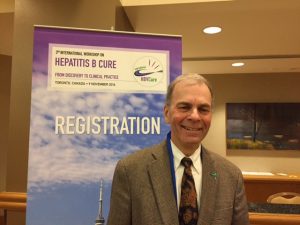
By Christine Kukka
It is time to sign up, re-enroll or change your health insurance plan in the Affordable Care Act’s Health Insurance Marketplace, also known as Obamacare. Millions of Americans – many of them with pre-existing medical conditions such as hepatitis B — get their much-needed health insurance through this plan.
But President-elect Donald Trump has promised to repeal the Affordable Care Act (ACA), which funds the program, and now Republicans will have control of the House and Senate. What should we, who require health insurance to cover our doctor visits, lab tests and costly antiviral treatment to keep our livers healthy, do? Should we sign up for 2017?
YES, experts say emphatically.
Even if Congress passes legislation to repeal parts of the ACA and Trump signs it into law, these changes are unlikely to go into effect before 2019 because Congress will need time to design a replacement plan and the IRS will need time to create a new tax system to go along with whatever replaces the ACA.
So for 2017, if you still need health insurance coverage and the subsidies including premium subsidies and cost-sharing subsidies, they will still available. They will probably change starting in 2018, but for 2017 you can still sign up and receive coverage now.
To date, healthcare policy experts predict Republicans will not repeal the program because of the huge number of Americans that use it. And what remains popular about the program is that it requires insurers to take all applicants regardless of their medical condition, which is vital for us with chronic hepatitis B.

Right now, the marketplace can only ask our age and whether we smoke when providing coverage. It cannot ask about our hepatitis B or what drugs we take, nor can it impose any caps on our medical expenses. If and when the Trump-Congress changes the program, it can only do so by changing how it is funded.
The Trump-Congress will have to design a replacement and/or improvements for the ACA if it repeals it, or risk political suicide. “I think they can get away with (insuring) slightly fewer people and somewhat skimpier benefits, but not too much,” wrote Aaron E. Carroll, professor of pediatrics at Indiana University School of Medicine who blogs on health research and policy, in a recent New York Times opinion piece. “There’s a part of me that thinks many in Congress were always so willing to vote for a ‘repeal’ because they knew it had no chance of being signed into law. They got credit for the vote without ever having to face the downside. Actually repealing without replacing would mean effectively stripping more than 20 million people of their health insurance, without anything in return.
“This would be an unmitigated political disaster. The stories — of people with cancer, diabetes and more who were suddenly stripped of their insurance and left out in the cold — would very likely dominate our discussion for months,” “That leaves more than enough time to lead to significant repercussions in the 2018 midterm elections. With no Democratic leaders in any branch of government to blame, I think this would be akin to what happened in the 2010 elections, but in reverse.”
Many acknowledge that the ACA isn’t perfect and needs improvement. Many clients with hepatitis B who stop for a plan at the ACA’s website may find few choices and higher prices, though subsidies will remain for those with moderate incomes in 2017.
ACA clients need to review the plans carefully, and look up the “drug tier” and price for antivirals such as tenofovir (brand name Viread) and entecavir. The newest antiviral approved by the U.S. Food and Drug Administration—called TAF or tenofovir alafenamide (brand name Vemlidy, a different formulation of tenofovir) will probably not be listed yet in any of the insurance plan drug lists.
If or when your doctor recommends TAF, review your insurance plan carefully to find out the price. You will probably have to be pre-qualified for this new drug, which is designed to reduce side effects such as bone loss and kidney damage in those who have been on tenofovir.
Remember, be an active consumer and participant in our democracy. If the ACA has worked well for you, let your elected representatives know. And, do your research to find the best health plan possible before you enroll.
Remember:
-
Dec. 15, 2016, is the last day to sign up or change plans for coverage starting on Jan. 1, 2017
-
And Jan. 31, 2017, is the last day to enroll or change a plan for 2017, unless you qualify for a special enrollment period because you stopped working.
For more information about getting the best hepatitis B drug prices through the ACA, click here.








